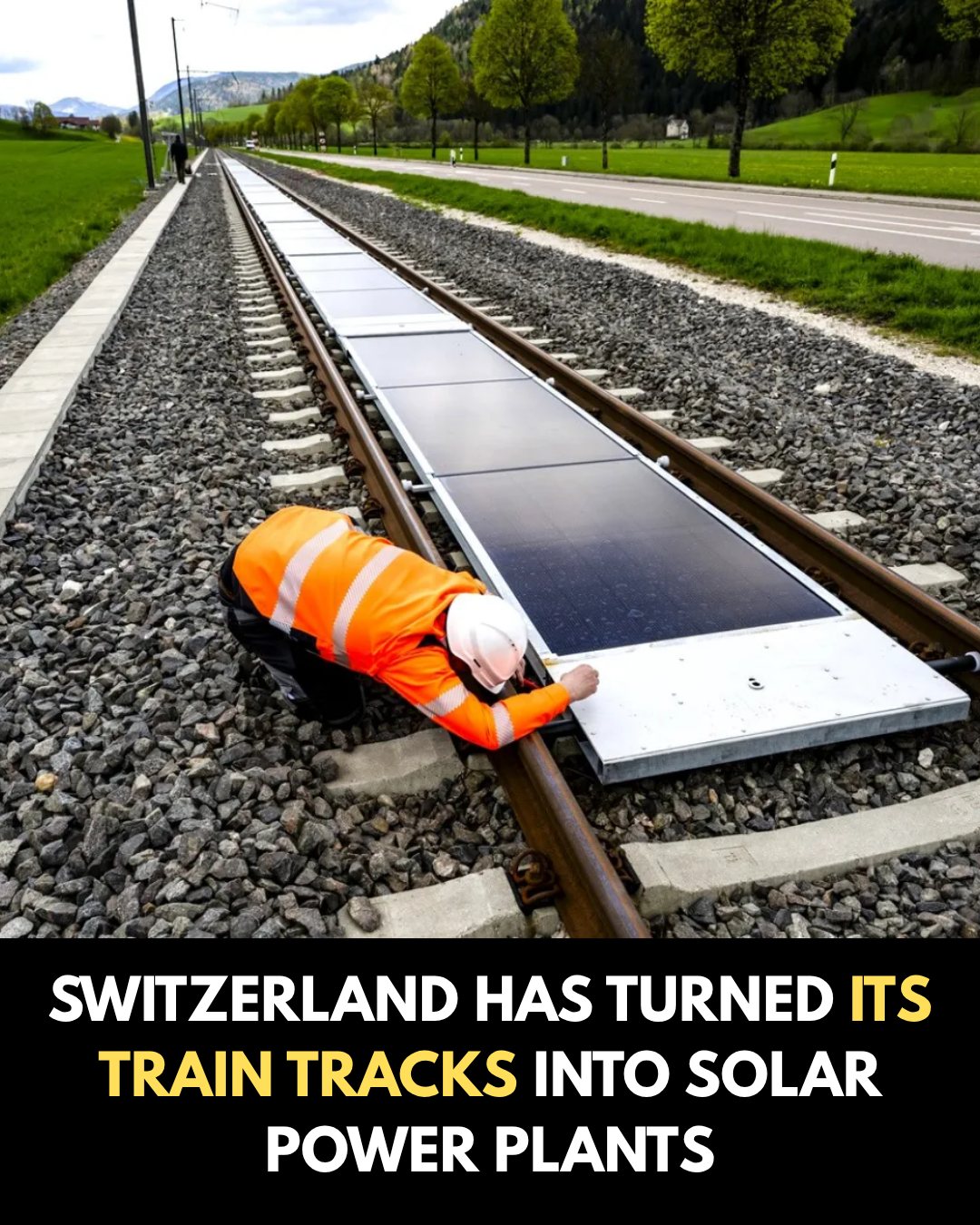The idea struck Joseph Scuderi one day in 2020 while he was waiting for a train in Renens, west of Lausanne. Why not do something with the unused space between railroad tracks?
Five years later, Scuderi and his start-up Sun-WaysExternal link have placed 100 metres of solar panels on tracks in Buttes, a small village in canton Neuchâtel in western Switzerland.
“We installed solar panels as we would on the roof of a house,” Scuderi says at the unveiling of the project on April 24. With steady rain falling, it wasn’t an ideal day for inaugurating a solar power plant, but Scuderi was happy. Getting this far, he says, “has been a miracle”.
This is not the first time solar energy has been integrated into rail infrastructure. Projects in Germany, Italy, France and Japan are testing solar panels between the rails. However, the Swiss start-up is the first to have designed a removable system that can be placed on railway lines that are open to traffic.
By exploiting the vast unexploited surface along railways, Sun-Ways aims to “revolutionise photovoltaic energy production”.
Removable solar panels to allow railroad maintenance
The Buttes installation consists of 48 solar panels placed on railroad sleepers, the rectangular pieces generally made of wood that support the steel rails.
The solar panels can be installed manually or mechanically by a machine run by the Swiss track maintenance company Scheuchzer. The machine can place and remove nearly 1,000 square metres of solar panels in just a few hours.
Even though the panels are designed to stay in place while trains run, the ability to easily remove photovoltaic cells is important to allow maintenance or replacement work on the tracks. To keep the panels clean, a cylindrical brush can be placed on the end of trains.
Sun-Ways got the support from a dozen partner companies and the Swiss Agency for Innovation Promotion (Innosuisse). The budget for this initial trial phase in Buttes amounts to CHF585,000 ($704,600).
2% of Swiss electricity from solar rail?
The electricity generated by the panels is fed into the local power grid. The solar rail power plant in Buttes will produce up to 16,000 kilowatt-hours (kWh) of electricity per year, the average consumption of four to six households.
Sun-Ways says the approximately 5,320 kilometres of the Swiss rail network – minus sections in tunnels or with little sunshine – could generate one billion kWh of solar power per year. This corresponds to the consumption of 300,000 households, or 2% of the electricity used in Switzerland.
Like many other countries, Switzerland is banking on solar and other renewable energy sources to achieve a zero-emission society. To meet its energy goal by 2035, Switzerland will need to produce seven times more solar energy than it currently does.
“It is good that rail and public transport companies are innovating, including in renewable energy production,” says Florence Pictet, spokesperson for the Federal Office of Transport (FOT).
Roofs and facades of operational buildings such as stations and platform shelters are particularly suitable for solar panels. Public transport companies could produce 20-30% of their electricity needs by using their own buildings and facilities, according to the FOT.
The transportation supervisory authority, however, is more cautious about the use of solar panels between tracks. It has authorised the trial in Buttes because trains there run fairly slowly, at a maximum speed of 70 km/h. It also stipulated that the test phase last for at least three years, not six months as Sun-Ways originally planned.


